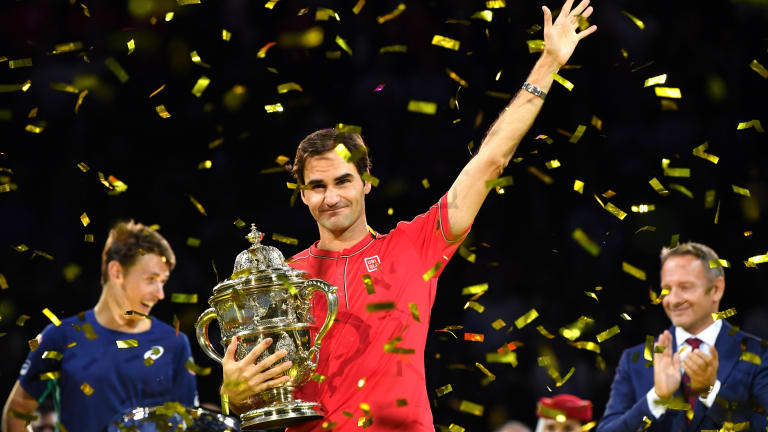Facts & Stats
Happy birthday, Roger! 42 stats for Roger Federer’s 42nd birthday
By Aug 08, 2023Facts & Stats
Carlos Alcaraz tops ATP prize money leaders for 2025 with over 21 million dollars
By Dec 24, 2025Facts & Stats
Most prize money in 2025: Aryna Sabalenka breaks single-season WTA record
By Dec 05, 2025Facts & Stats
Most wins in 2025: Carlos Alcaraz dominates leaderboard with sparkling 71-9 record
By Dec 04, 2025Facts & Stats
Biggest ranking jumps in 2025: Amanda Anisimova makes biggest leap into Top 10
By Dec 03, 2025Facts & Stats
Most titles in 2025: Carlos Alcaraz joins exclusive list with eight trophies this year
By Dec 02, 2025Facts & Stats
Most aces in 2025: Elena Rybakina becomes first woman in nine years to surpass 500 aces
By Dec 01, 2025Facts & Stats
10 sensational things Jannik Sinner achieved by winning this year's ATP Finals in Turin
By Nov 20, 2025Facts & Stats
Roger Federer is headed to the International Tennis Hall of Fame: 26 stats for his 2026 induction
By Nov 19, 2025Facts & Stats
Generational Rivalry: Jannik Sinner, Carlos Alcaraz head into 2026 after playing for four of five biggest titles
By Nov 16, 2025Happy birthday, Roger! 42 stats for Roger Federer’s 42nd birthday
From his record consecutive streak at No. 1 to his eight Wimbledon titles to winning 24 finals in a row to much, much more, here’s a stat for all 42 of his birthdays so far.
Published Aug 08, 2023
Advertising

Federer won ATP titles in 19 different countries, including 11 in his home country of Switzerland, including 10 in his home town of Basel.
© Getty Images
Advertising

Federer played 27 Davis Cup ties in his career, including leading Switzerland to the title in 2014.
© Corbis via Getty Images
Advertising

Federer had 40-match winning streaks at two different majors—Wimbledon between 2003 and 2008 and the US Open between 2004 and 2009.